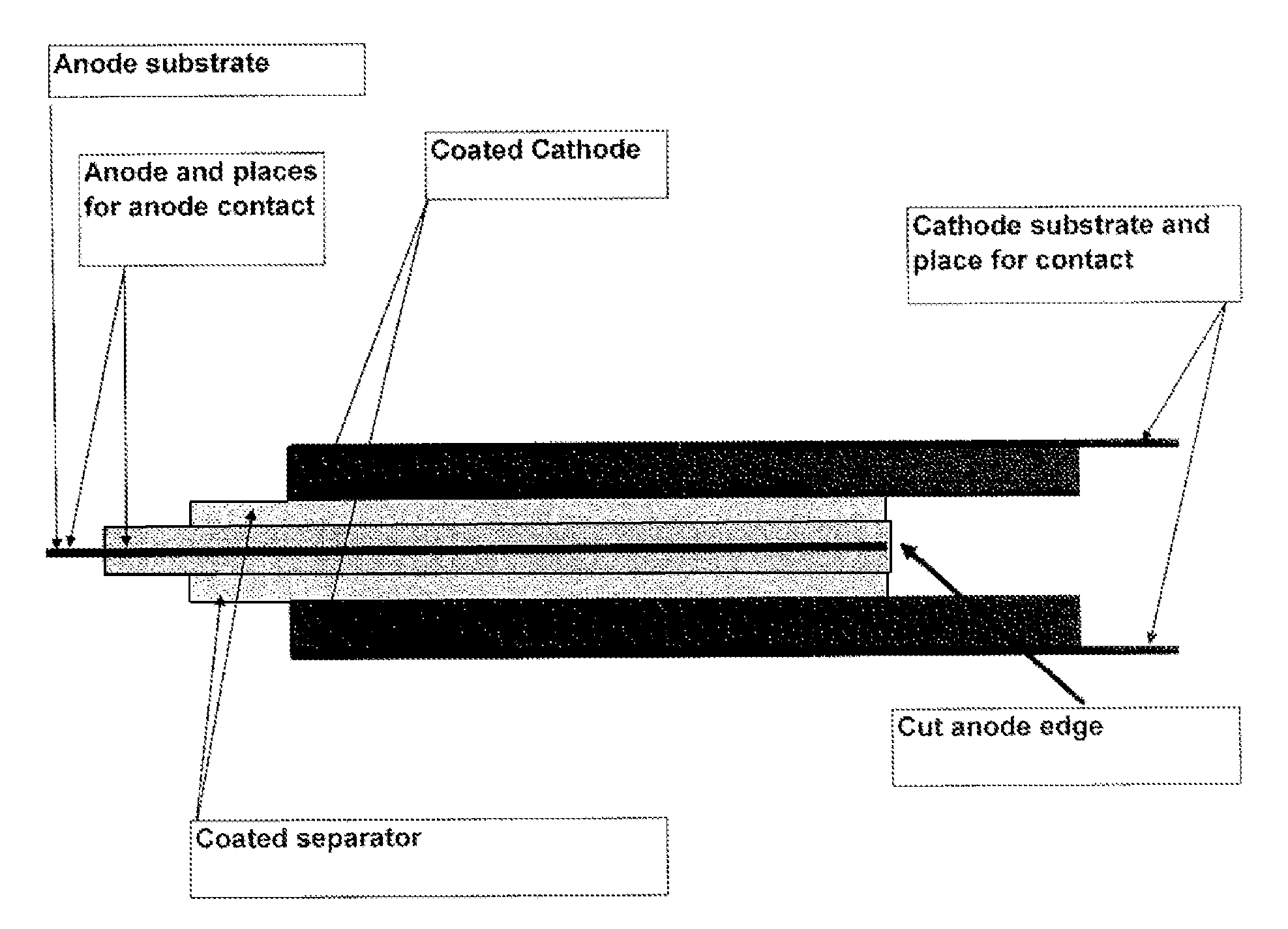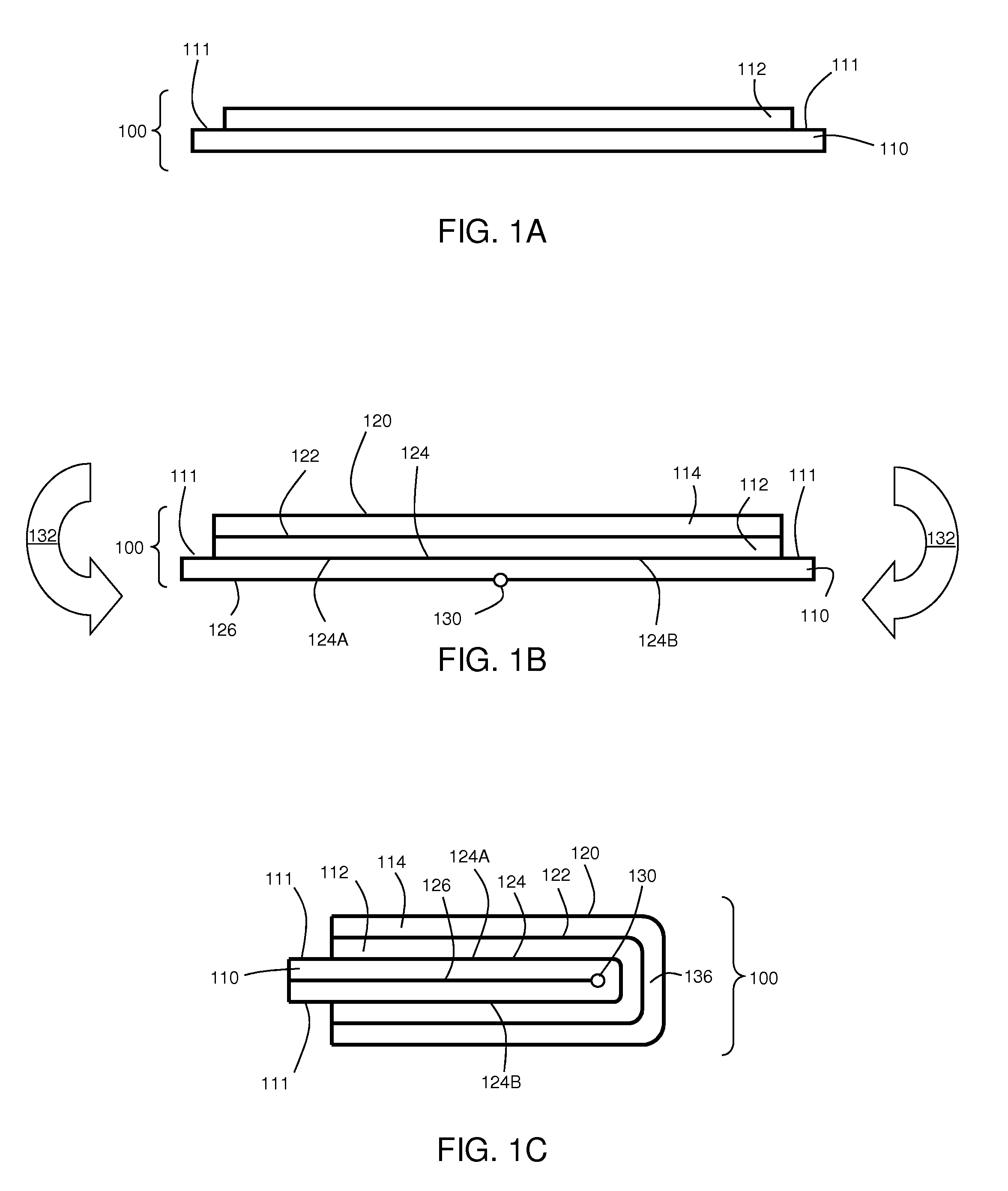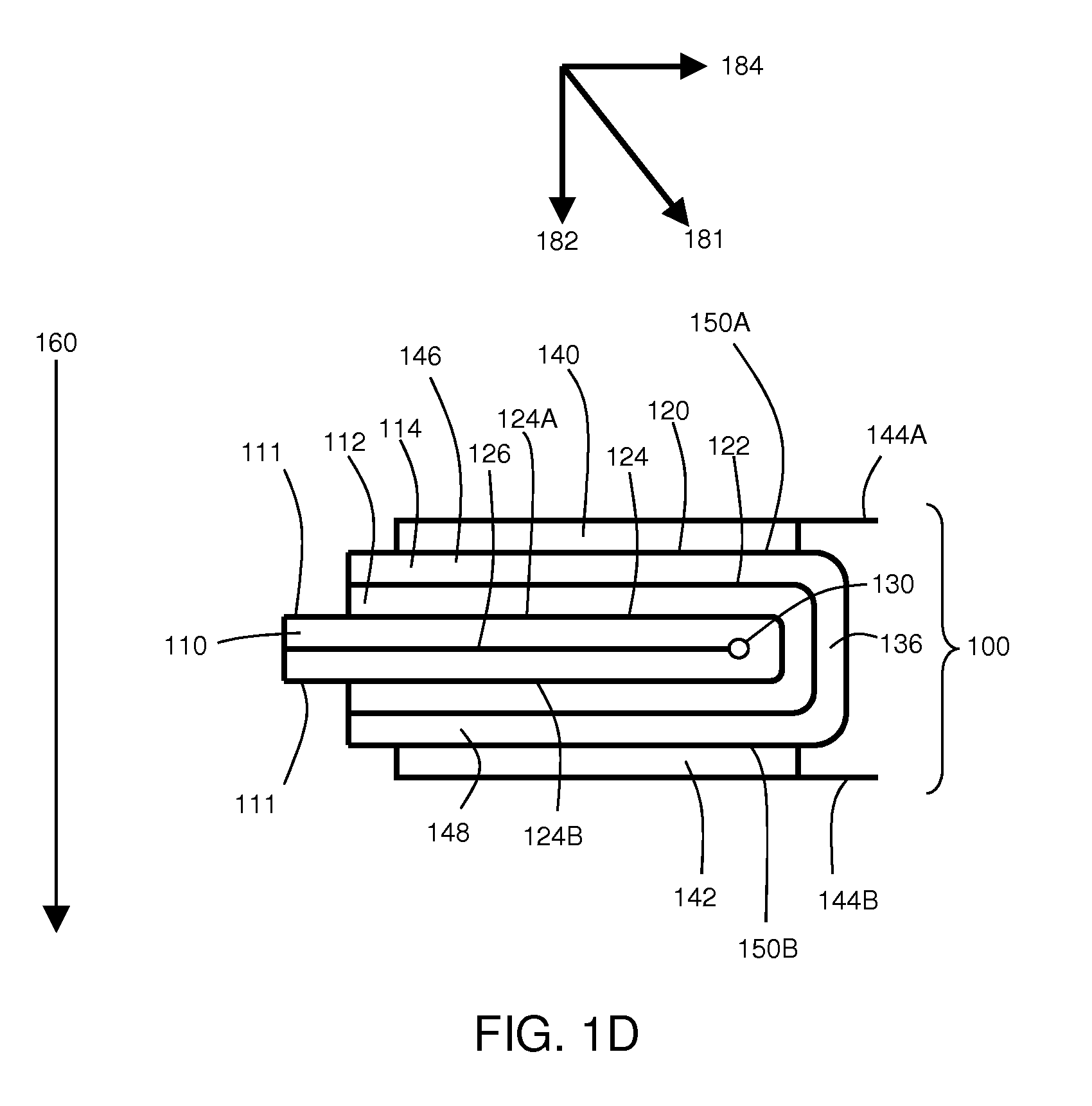Electrically non-conductive materials for electrochemical cells
a technology of electrically insulating materials and electrochemical cells, which is applied in the direction of cell components, sustainable manufacturing/processing, secondary cell details, etc., can solve the problems of limiting the effectiveness of batteries, limiting the use of electrochemical cells, and prone to failure of electrically insulating electroly
- Summary
- Abstract
- Description
- Claims
- Application Information
AI Technical Summary
Benefits of technology
Problems solved by technology
Method used
Image
Examples
example 1
[0099]This example describes the fabrication and use of an electrochemical cell comprising an electrode coated with an electrically non-conductive material layer and folded to form the cell. In this example, a lithium anode and sulfur cathode were employed.
[0100]To produce the electrically non-conductive material-coated anode, a conductive 0.1-micron thick Cu layer was deposited on a 50-micron thick polyethylene terephthalate (PET) substrate. In addition, a 25-micron thick lithium layer was vacuum deposited on the structure. Next, the stack of materials was coated with a 9-micron thick polymer / SiO2 composite electrically non-conductive material. The composite electrically non-conductive material was created through coating and UV curing a mixture with the following composition: glycydil butyl ether (83.5 wt %), Bis-phenol-F (10 wt %), photoinitiator PC-2506 (2 wt %), and TS-720 silica (4.5 wt %). After coating a layer of a mixture with the above composition, the sample was passed un...
example 2
[0105]This example describes the fabrication and use of an electrochemical cell comprising an electrode coated with an electrically non-conductive material layer and folded to form the cell. In this example, a lithium anode and sulfur cathode were employed.
[0106]To produce the electrically non-conductive material-coated anode, a conductive 0.2-micron thick Cu layer was deposited on a 50-micron thick polyethylene terephthalate (PET) substrate. In addition, a 25-micron thick lithium layer was vacuum deposited on the structure. Next, a composite of polyvinyl alcohol (Celvol 425) (55 wt %) and lithium bis-(trifluoromethylsulfon)imide (45 wt %) in dimethyl sulfoxide (DMSO) was coated on the top of the lithium. The thickness of dry electrically non-conductive material was 25 microns.
[0107]Batteries containing the above-described electrically non-conductive material-coated anode, cathode and separator were assembled in a similar fashion as described in Example 1. The cathodes were coated o...
PUM
| Property | Measurement | Unit |
|---|---|---|
| Pressure | aaaaa | aaaaa |
| Length | aaaaa | aaaaa |
| Electrical resistance | aaaaa | aaaaa |
Abstract
Description
Claims
Application Information
 Login to View More
Login to View More - R&D
- Intellectual Property
- Life Sciences
- Materials
- Tech Scout
- Unparalleled Data Quality
- Higher Quality Content
- 60% Fewer Hallucinations
Browse by: Latest US Patents, China's latest patents, Technical Efficacy Thesaurus, Application Domain, Technology Topic, Popular Technical Reports.
© 2025 PatSnap. All rights reserved.Legal|Privacy policy|Modern Slavery Act Transparency Statement|Sitemap|About US| Contact US: help@patsnap.com



